5 Top Pendo competitors & alternatives: a detailed comparison
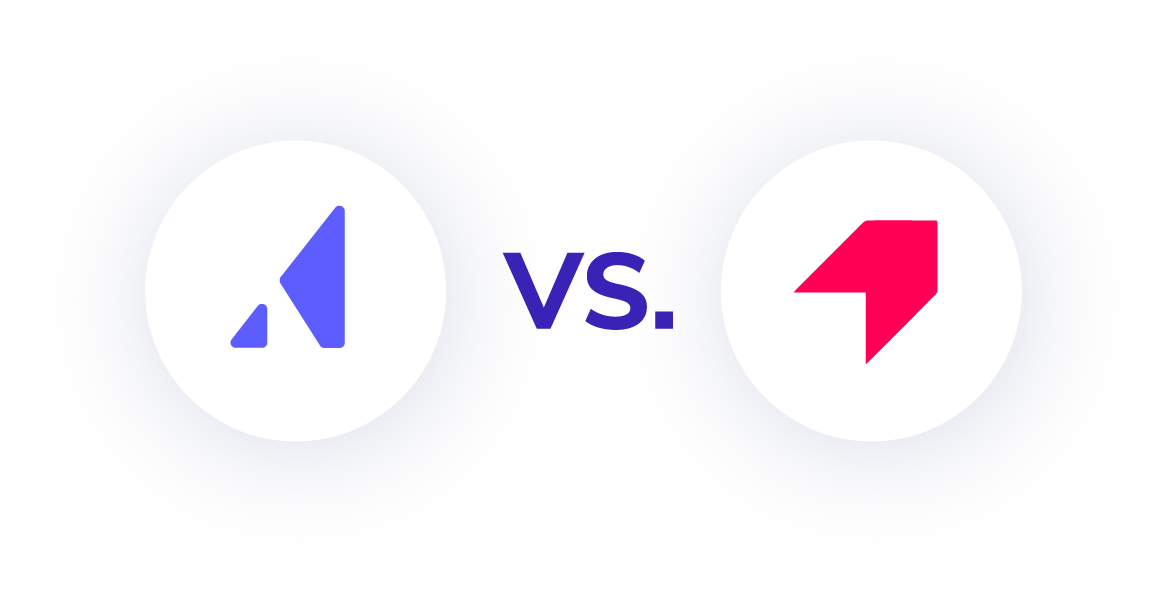
.png)

.png)
Founded in 2013, Pendo is one of the most comprehensive products in the digital adoption space. Their longevity in the market also means they've had the most time to evolve their product to match their users' needs. Of course, that doesn’t mean they're perfect.
Just because they're not the newest kids on the block doesn't mean that there aren't market alternatives with the same offerings and even better services. So, it’s not enough to choose Pendo based on their wide-ranging suite of products or age alone. The real question you should ask yourself is: what are Pendo’s key features and services, and how do they stack up to some of the alternatives on the market today?
Pendo positions itself as the only truly complete solution in the space—offering a combination of product analytics, customer sentiment analysis, in-app messaging, and user guidance.
Pendo’s in-app guides and messaging help you highlight features you want users to adopt, give them context about the UI elements on their screen, and nudge them toward any in-app activity you want. For insight into user activity within your app, Pendo analytics and customer sentiment analysis show you which of your users are most active and what features your users love the most. You can also use their analytics to facilitate comparisons of engagement between users with different attributes. For example, you can see who’s more active on your app: VP-level executives or junior-to-mid-level customers.
Pendo’s pricing isn’t listed on their website, but according to reviewers on the web, it can be anywhere from $2,000 a year for “just the tour functionality” to $12,000 a year for a startup package.
Pendo has a lot of great things going for it—and given the right circumstance, the features they offer can be supremely helpful. But it’s not perfect—nor is it the right solution for everyone. With such a hefty price tag, you don’t want to end up spending more than you have to for features you'll never use. If you're evaluating Pendo, you'll want to take these 3 things into consideration to determine if it's the right solution for you.
Pendo's "complete solution" offering means it's probably coming with more than you need. Because it has such wide functionality, some features are released before they're mature and ready for public use—which means you can end up paying for an experimental solution that doesn’t do what you need. Sure, Pendo offers a la carte pricing, but then you're still on the hook for paying a high price for limited functionality.
Pendo has oodles of features, which could make it difficult to get acquainted with the platform and use it effectively. To get up to speed, you'll need to spend a lot of time with their support team and engineering teams to get your instance dialed in for your specific use cases.
Even after you've deployed the application and customized it to your liking, you’ll likely need to reach out to support for additional help. That back and forth takes away valuable time from your team compared to other alternatives.
As good as their features are, there’s no doubt: Pendo is expensive compared to similar products on the market. If you're working on a tight budget, a Pendo alternative will be a better fit, especially if you have several products in your portfolio. One G2 reviewer said:
"Pendo is expensive and the larger you become, the more expensive the solution is for your organization."
When you sink so much time into setting up the product, it's going to take a while before you see that value pay off. If you have budgetary constraints (in this economy, who doesn't?), you can't afford to wait too long to see ROI on your investment. In this case, a Pendo alternative might provide better value.
Where money isn’t a problem, Pendo’s all-in-one solution may be the best fit for some businesses. However, if Pendo doesn’t meet your needs or you’re just shopping around for Pendo alternatives, these are the best options in the market:
Appcues is built on the premise that a superior product experience should be as simple as possible. It currently enables over 1,500 SaaS companies to effortlessly onboard, engage, and target the right users without any need for developer support. From our inception, Appcues has been about improving product adoption and enhancing the SaaS onboarding experience. But beyond just our product, we take a lot of pride in our approach to market education and resources. Our Product Adoption Academy offers free, high-value courses and certifications in user onboarding, product launches, and more—and our Behind the Experience show and Product-Led Growth Collective feature insights from the foremost experts on product experience design and product-led growth strategy.
Appcues offers a wide variety of features:
Appcues has a free trial that lasts for two weeks or until you've shown users your first 50 flows. Paid plans have three pricing tiers:
Appcues is purpose-built for product adoption. Every feature is specifically designed to help you offer better in-app experiences to your users. It makes life easier for your team by being incredibly easy to use—offering robust reporting, and delivering exceptional customer support.
Appcues is easier to use than Pendo. You won't spend weeks or months setting it up or learning about the platform before deployment. So, you'll get a faster time to value and not worry about any back-and-forth with the support team.
Additionally, you don't need to contact your engineering team for advanced applications because setting up and using Appcues doesn't require any HTML or CSS knowledge. This allows you to focus on deployment instead of whether or not your setup is right.
Pendo's analytics features earn it comparisons with popular analytics tools. But as users have found, you can't easily integrate another analytics solution to get better or varied insights if Pendo’s analytics aren’t quite right for you.
Appcues shines here. Even though it offers robust analytics, it still allows you to integrate with existing analytics tools you already have to get a deeper understanding of your users' behaviors. Its "Data In" integrations include Google Analytics, Heap, Segment, Amplitude, Mixpanel, and many others. You're not obligated to rely solely on Appcues intelligence to make decisions about your product or calculate SaaS metrics like conversion rate and churn rate.
Pendo's steep learning curve often means that users have to pay extra for their training on how to use the product. Appcues offers expert, responsive customer onboarding at no extra cost to you. The support staff is ever-ready to assist you wherever and whenever you experience any challenges.
Appcues' also has an extensive resource of product-led growth best practices, videos, and tutorials to help you make the right decisions at every stage of your journey. These come at no additional cost to you, no matter your plan.
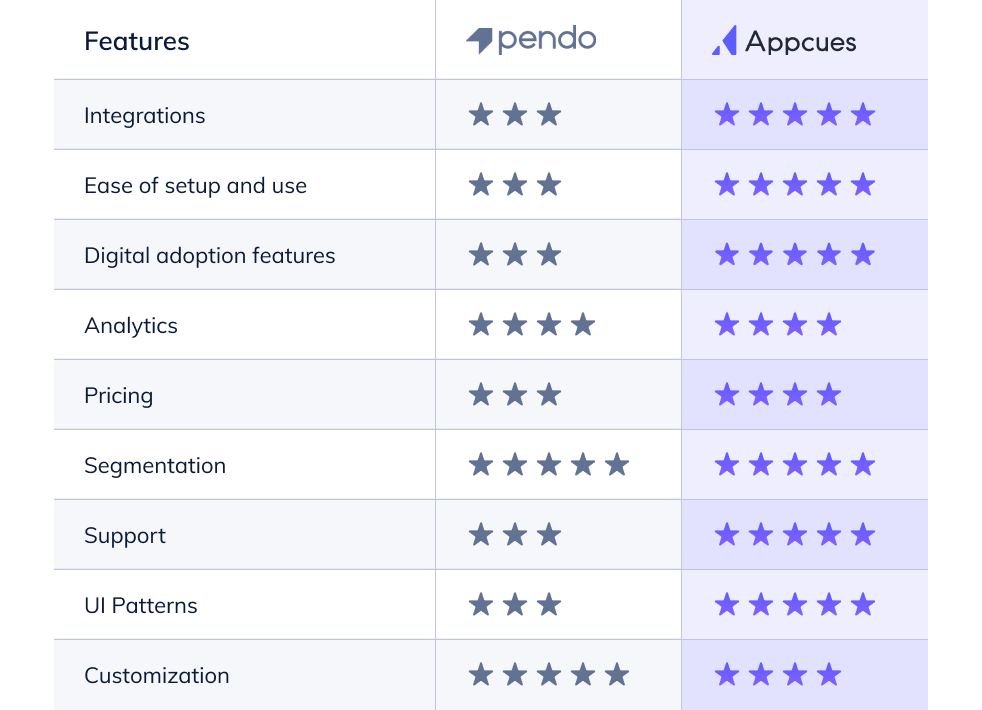
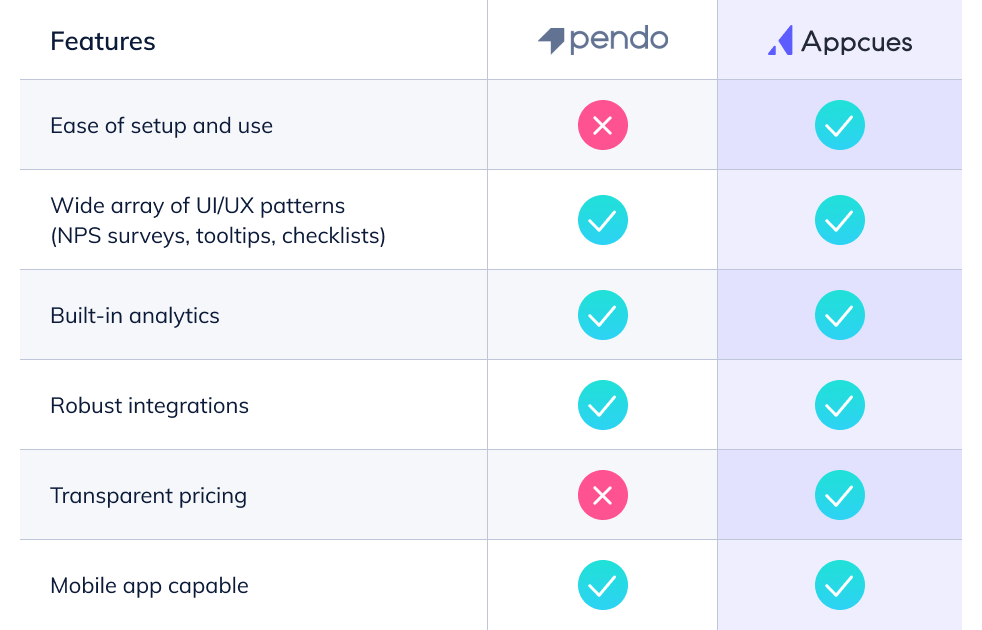
Chameleon offers products to help you increase user engagement and reduce churn. It has features for onboarding new users, launching new features, and getting user feedback on your products. Unlike Pendo, Chameleon is primarily focused on product adoption through in-app guidance.
Chameleon helps you build an exceptional user onboarding experience through tooltips, micro surveys, and launchers.
Chameleon has three plans:
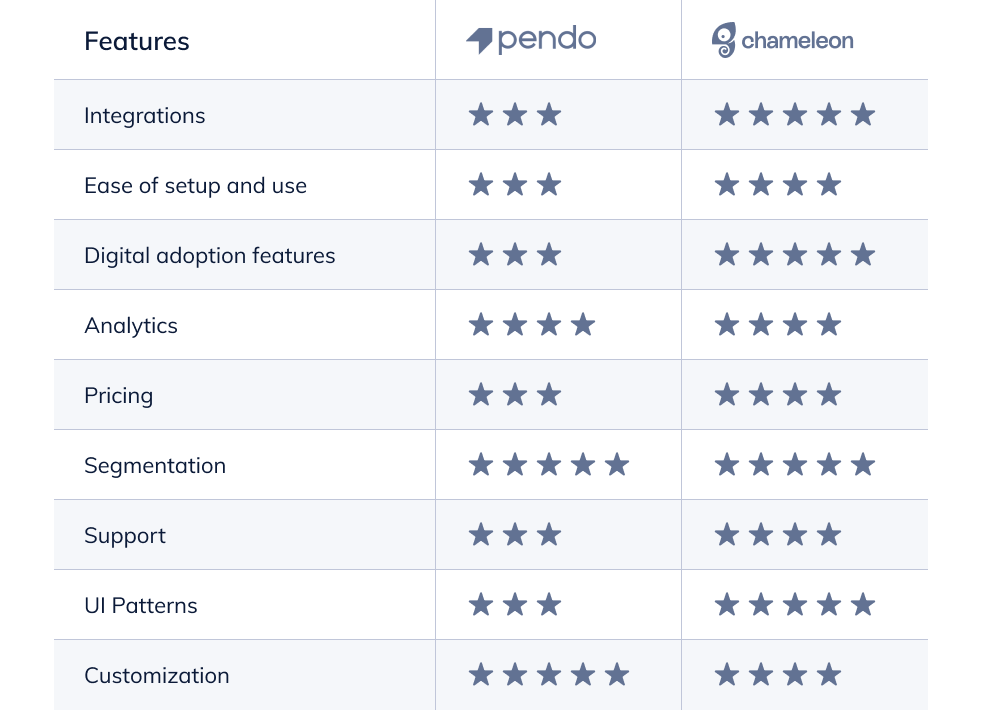
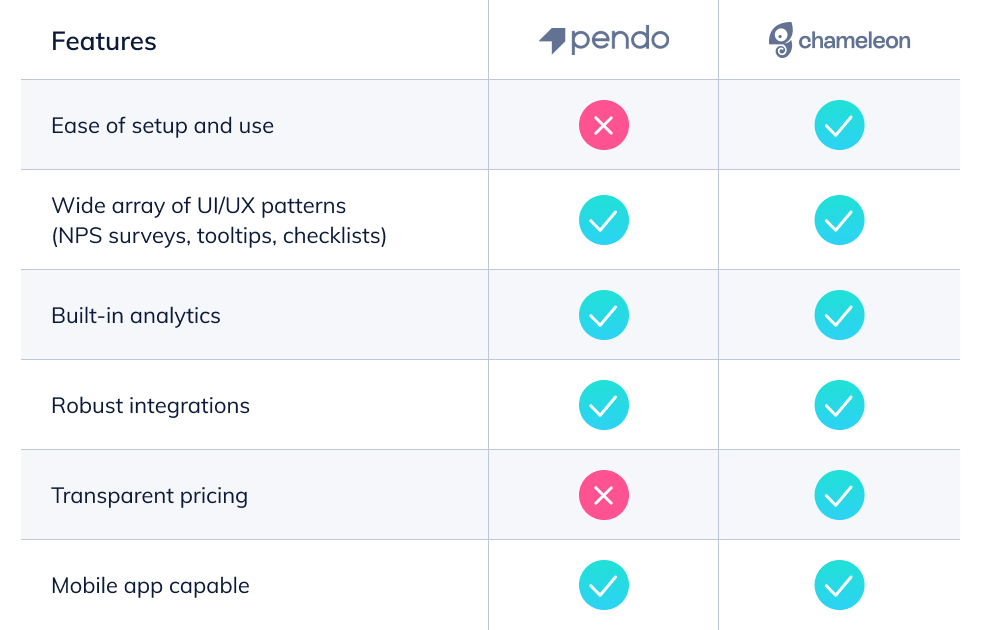
UserGuiding calls itself a "product walkthrough and user onboarding software." It helps you use interactive guides to show users the power of your products. UserGuiding is a more extensive and affordable product adoption platform than Pendo, and its advanced UI patterns for user onboarding and engagement are more robust than what Pendo offers.
Since it's primarily a digital product adoption tool, UserGuiding has features to help you quickly onboard new users. These include:
UserGuiding has three pricing tiers:
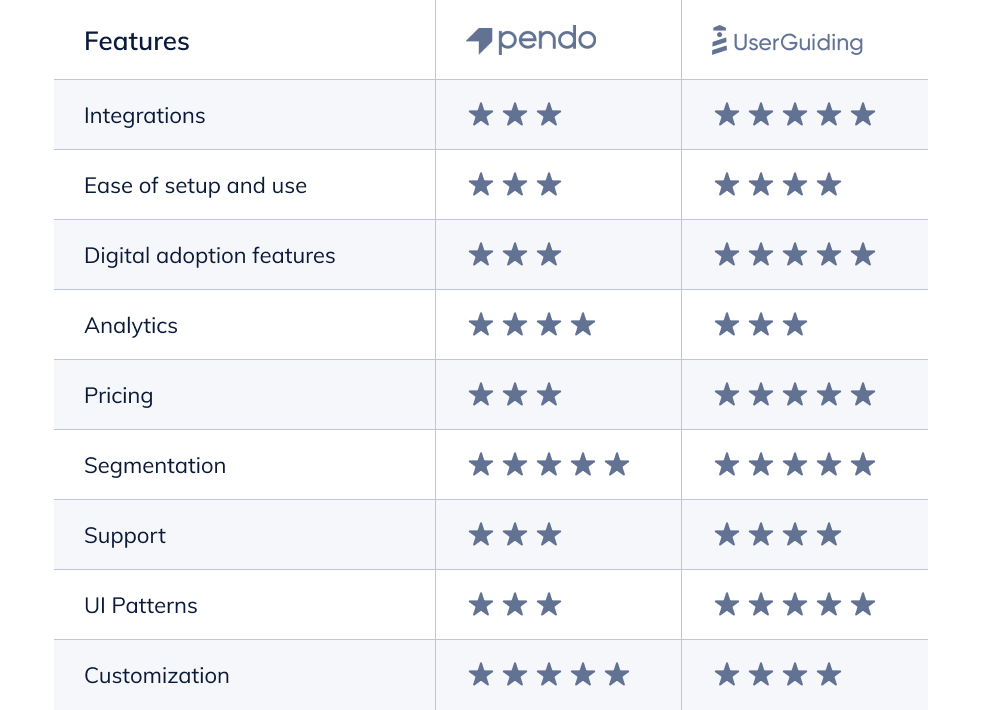
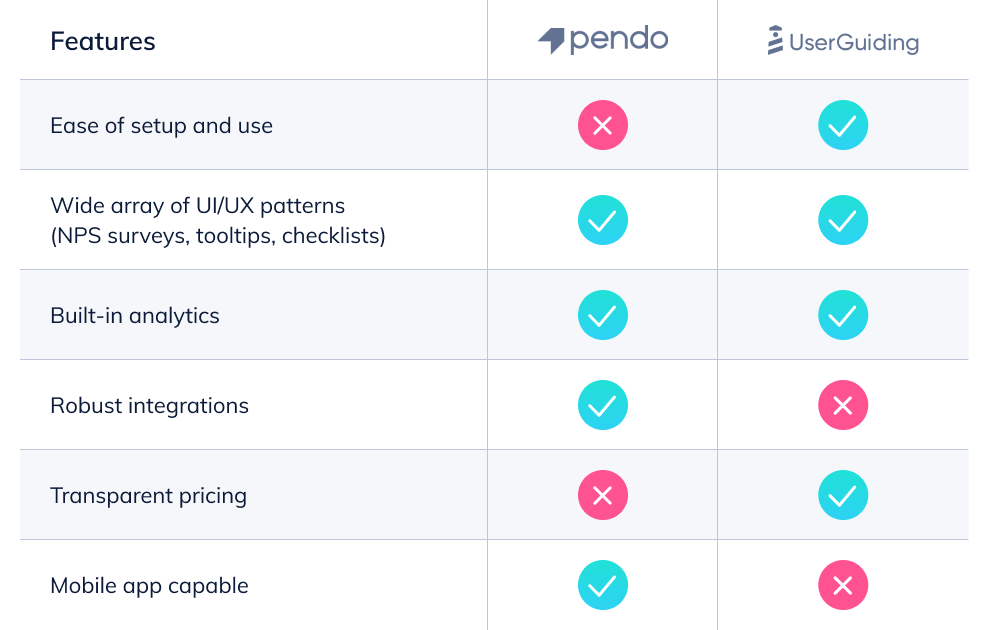
WalkMe is designed to improve both the customer and employee onboarding experience. It focuses on guided walk-throughs and product tours to improve the customer’s experience and handles employee learning, development, and productivity to help your newest employees. However, WalkMe's analytics integrations are limited compared to the first three alternatives.
WalkMe's features to boost digital adoption of your products include:
In 2014, someone said WalkMe quoted them $12,000 for "100 users and a couple dozen walkthroughs in response to a pricing inquiry." WalkMe still doesn't have fixed pricing options anywhere on their site, so you'll have to contact them on their pricing page for a quote.
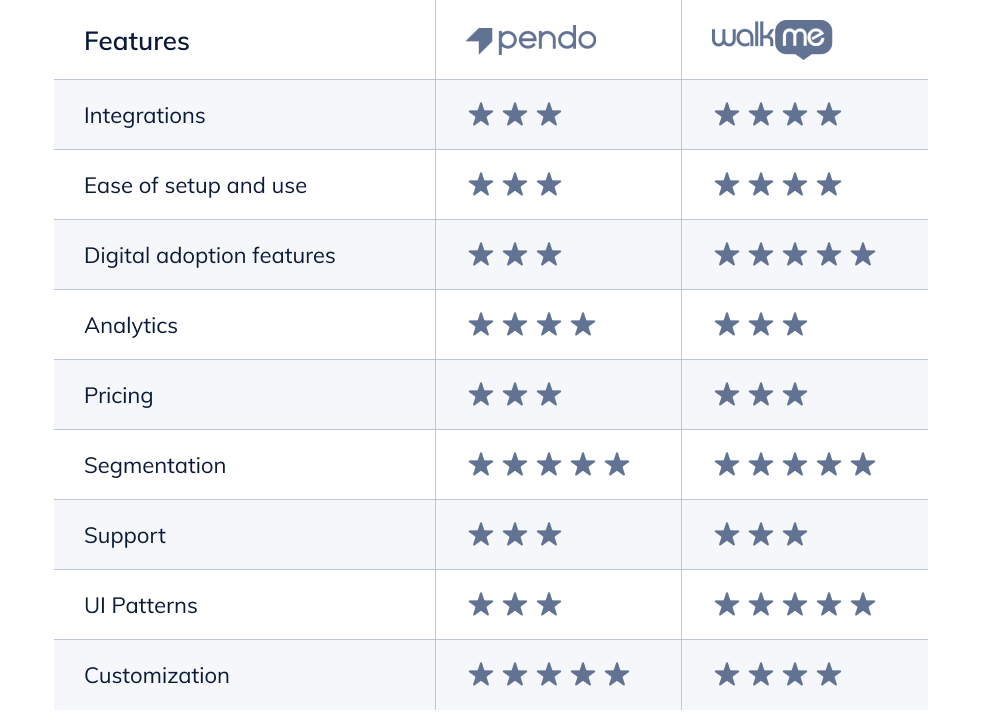
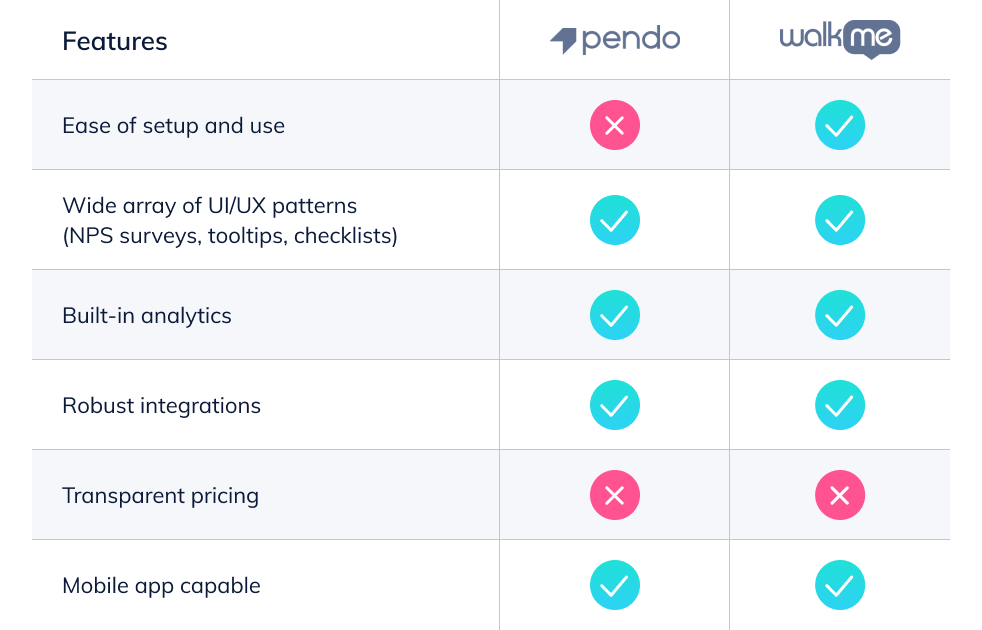
Whatfix is a digital adoption platform created to help businesses successfully onboard new users and employees with interactive guides in multiple media formats. Whatfix is neither the easiest tool to learn on this list nor the cheapest, but its features for customer digital adoption are truly exceptional.
Whatfix has several UI patterns you can use to engage, onboard, and train your users.
Whatfix has no plans on display on their site. Regardless of your needs, you must fill out a form to request a pricing quote and gain access to Whatfix’s packages. On the plus side, you can sign up for a free trial to see what you'll pay for firsthand.
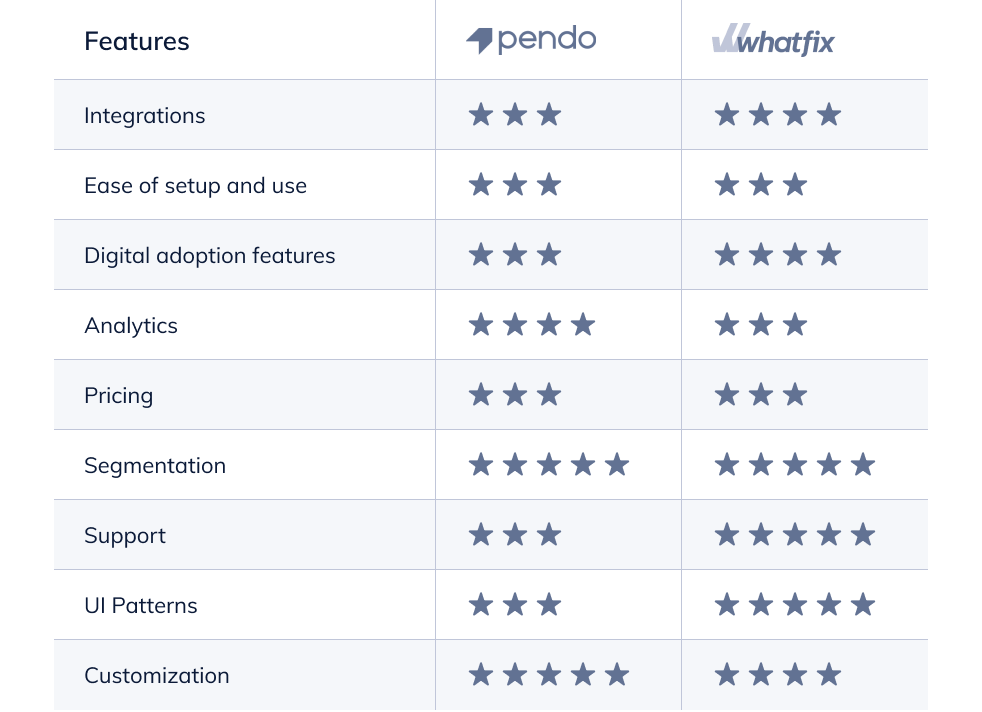
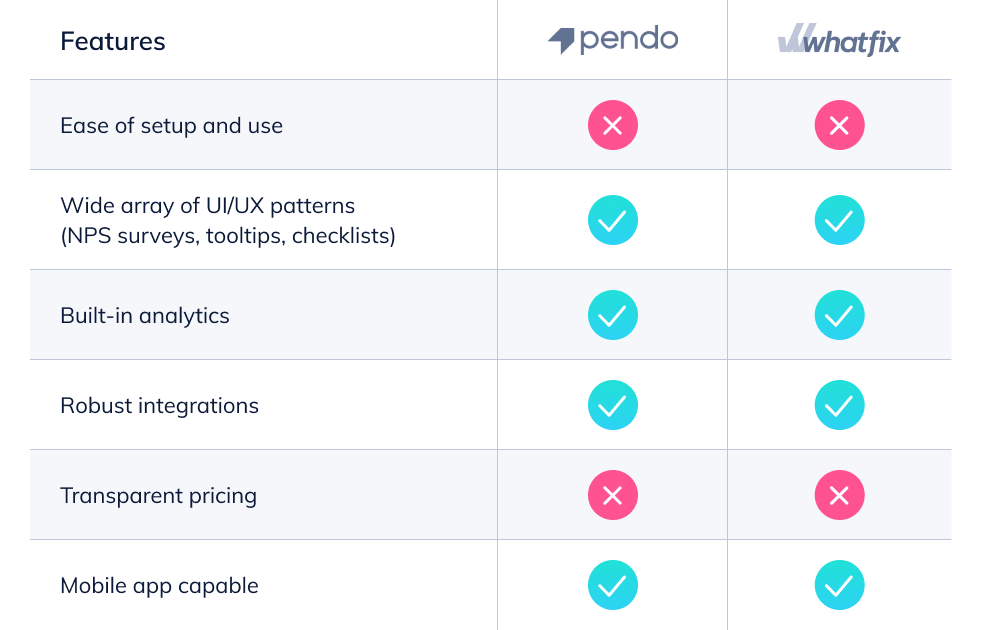
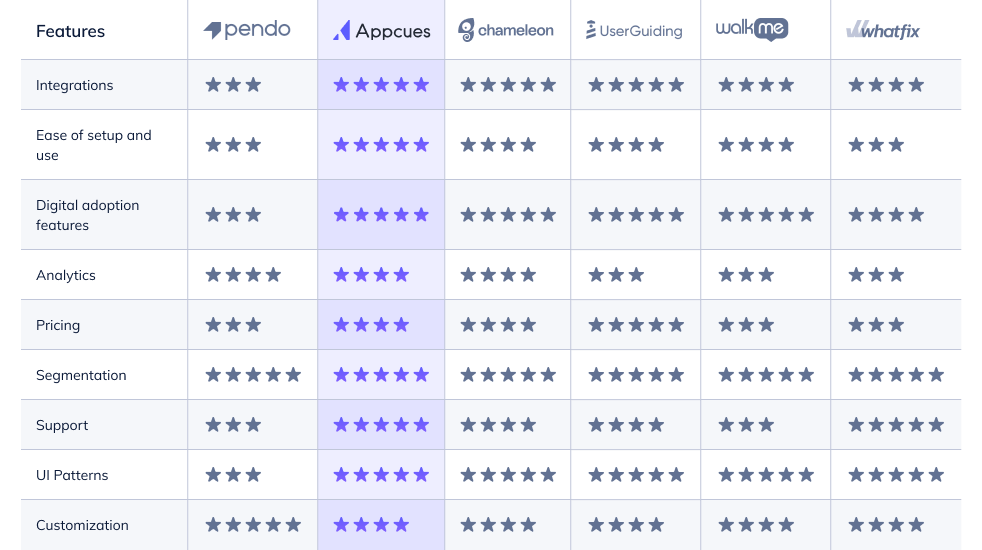
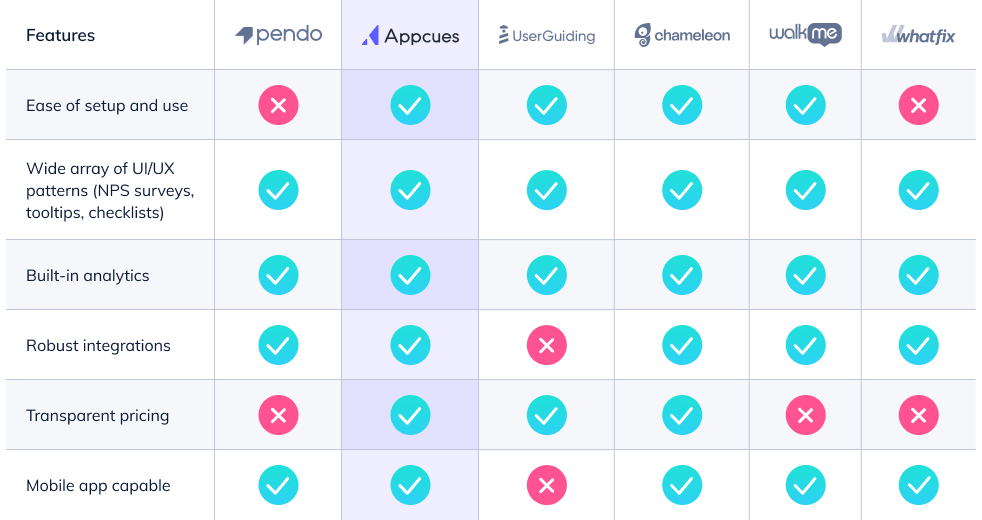
There’s no one-size-fits-all solution for digital adoption. The best platform for you will depend on your needs and goals. But if you’re considering Pendo alternatives, Appcues is a comparable solution. While both digital adoption platforms have many of the same features, Appcues’ integrations, ease of use, and support make it an outstanding choice for the majority of use cases.
Don’t take our word for it. Discover Appcues’ excellence with a free trial.